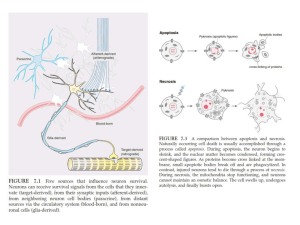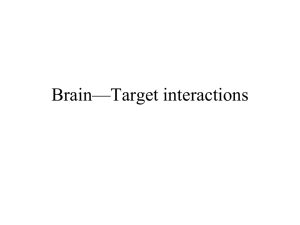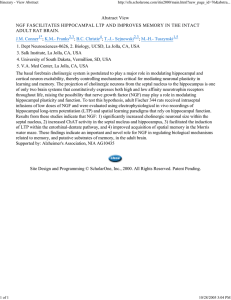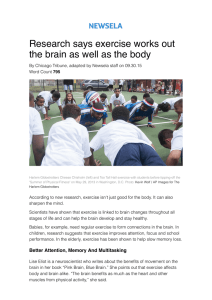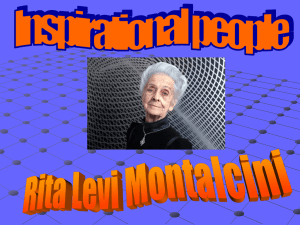NGF One Sheet
advertisement
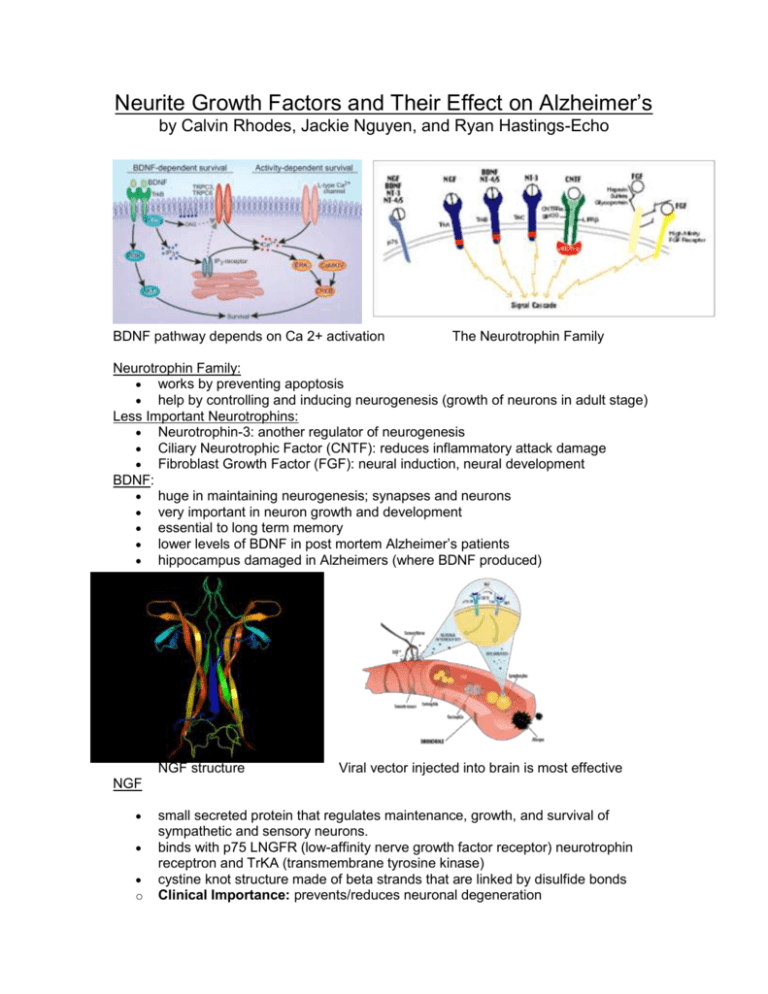
Neurite Growth Factors and Their Effect on Alzheimer’s by Calvin Rhodes, Jackie Nguyen, and Ryan Hastings-Echo BDNF pathway depends on Ca 2+ activation The Neurotrophin Family Neurotrophin Family: works by preventing apoptosis help by controlling and inducing neurogenesis (growth of neurons in adult stage) Less Important Neurotrophins: Neurotrophin-3: another regulator of neurogenesis Ciliary Neurotrophic Factor (CNTF): reduces inflammatory attack damage Fibroblast Growth Factor (FGF): neural induction, neural development BDNF: huge in maintaining neurogenesis; synapses and neurons very important in neuron growth and development essential to long term memory lower levels of BDNF in post mortem Alzheimer’s patients hippocampus damaged in Alzheimers (where BDNF produced) NGF structure Viral vector injected into brain is most effective NGF o small secreted protein that regulates maintenance, growth, and survival of sympathetic and sensory neurons. binds with p75 LNGFR (low-affinity nerve growth factor receptor) neurotrophin receptron and TrKA (transmembrane tyrosine kinase) cystine knot structure made of beta strands that are linked by disulfide bonds Clinical Importance: prevents/reduces neuronal degeneration ProNGF uncleaved precursor of protein of NGF doesn’t undergo post-transcription modification o Tags neuron for survival or programmed cell death Combating Alzheimers: Prevents beta amyloid toxicity Stimulates growth of neurons that commonly die in AD (Cholinergic neurons) Activates other neurotrophins Can increase MMSE score (how AD is measured) by 40-50% Issues: Patients report weight loss with direct brain injections NGF has difficulty crossing the blood brain barrier Pro-nociceptive (pain causing) when placed near spinal cord Causes hemorrhages when patients move (later studies have placed patients under general anesthetic) The most successful results using NGF have been observed when it is injected by viral vector directly into the brain.

